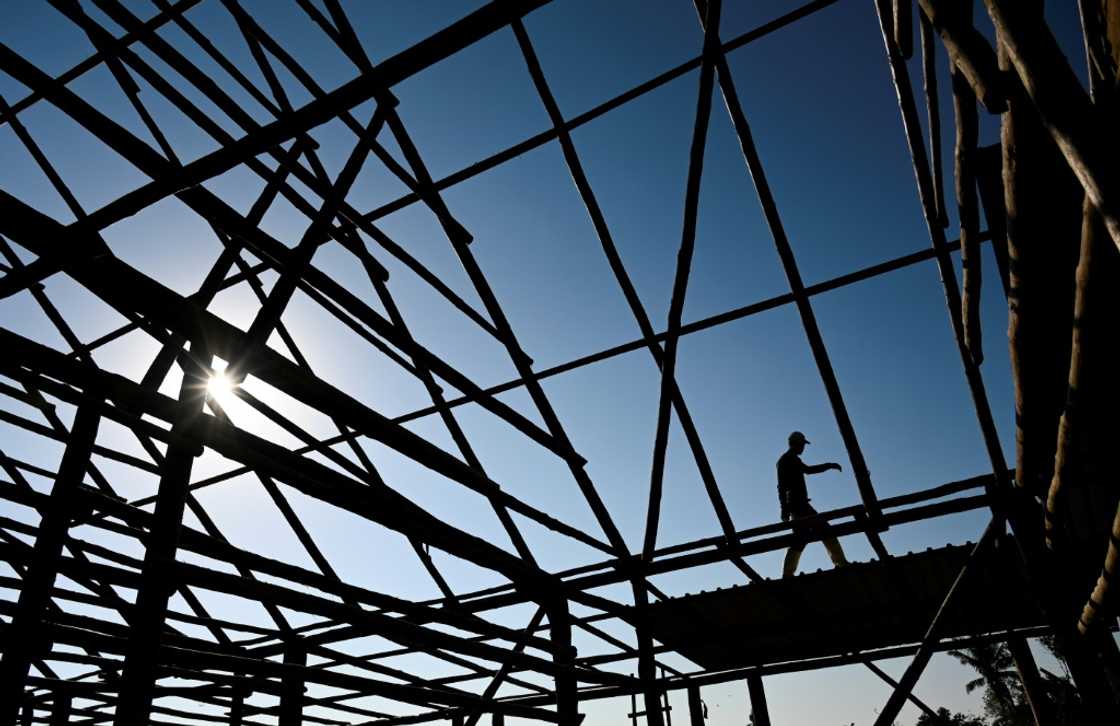Walloped by hurricane, Cuba's tobacco sector struggles to its feet

Source: AFP
PAY ATTENTION: Enjoy reading our stories? Join YEN.com.gh's Telegram channel for more!
Cuban farmer Maritza Carpio, 62, is optimistic. Five months after Hurricane Ian wreaked havoc on the island nation and its vital tobacco industry, she has started drying leaves for habano cigars again.
Carpio, who inherited a 5.6-hectare farm from her parents, said she will never forget September 27, 2022, when Cuba's west coast was battered for hours on end by Ian, with gusts of up to 208 kilometers (129 miles) per hour.
The Category 3 hurricane was particularly rough on the Vuelta Abajo region -- described as Cuba's tobacco triangle.

Source: AFP
Trees were uprooted, roofs blown off, fields flooded, and tobacco drying houses collapsed.
PAY ATTENTION: Click “See First” under the “Following” tab to see YEN.com.gh News on your News Feed!
Carpio is rebuilding hers, "stronger and more modern" this time, she told AFP while overseeing workers installing roof panels on the wooden structure.
Drying houses, with their roofs of palm leaves or tin, allow tobacco leaves to brown gradually without losing their flexibility due to a perfect mix of temperature, humidity and airflow.

Source: AFP
Planting is pointless if the leaves cannot be dried in optimal conditions directly after harvest.
"Once I was sure the drying house would be ready, I decided to plant," Carpio said, showing off her plants now standing a meter (3.2 feet) tall.
Rolled tobacco is one of Cuba's main exports, along with fisheries products, nickel and vaccines.
As Cuba battles its worst economic crisis in three decades, the government and state-owned company Tabacuba -- which buys 95 percent of its crops from private producers -- provided aid to farmers like Carpio in the form of donations of materials, and cheap loans.
Replaced by corn, beans
A few kilometers from Carpio's farm, 50-year-old Rafael Perez is adding finishing touches to his own tobacco drying house despite great obstacles finding materials.
He planted 60,000 plants on his two-hectare property, and has started harvesting. But he was relatively lucky.

Source: AFP
"Many neighbors have been unable to grow tobacco because they do not have a drying house," Perez told AFP.
The remains of destroyed tobacco houses dot the landscape.
On some farms, corn or beans have replaced tobacco. Others gave up altogether.
"I used to be proud of growing tobacco. I like what I do. It was my family's livelihood," said Bisniel Benitez, 33, who went into tobacco farming four years ago.
But Ian lifted the roof off his drying house and ruined the turbine he and other farmers used for irrigation.
A father of one, Benitez now works as a day laborer, having used the little savings he had to repair hurricane damage to his home.

Source: AFP
"To have worked so long for something that collapsed" in a few hours "makes you want to cry," he said.
Producers say it will take eight to 10 years for the province of Pinar del Rio, which produces 65 percent of Cuban tobacco, to get back to normal.
But that is only if there is not another hurricane in a region frequently ravaged by tropical storms.
In 2021, Cuba exported cigars worth $568 million, according to the latest figures published by Habanos S.A. -- a 15 percent increase from the year before despite the effects of the coronavirus pandemic.
Spain, China, Germany, France and Switzerland are the top buyers.
Next week, the 23rd edition of the Habano Festival opens in Havana after a two-year hiatus due to the pandemic. The festival is the world's leading showcase for premium cigars.
Cuba's 2022 export figures are to be released there.
New feature: Сheck out news that is picked for YOU ➡️ click on “Recommended for you” and enjoy!
Source: AFP




